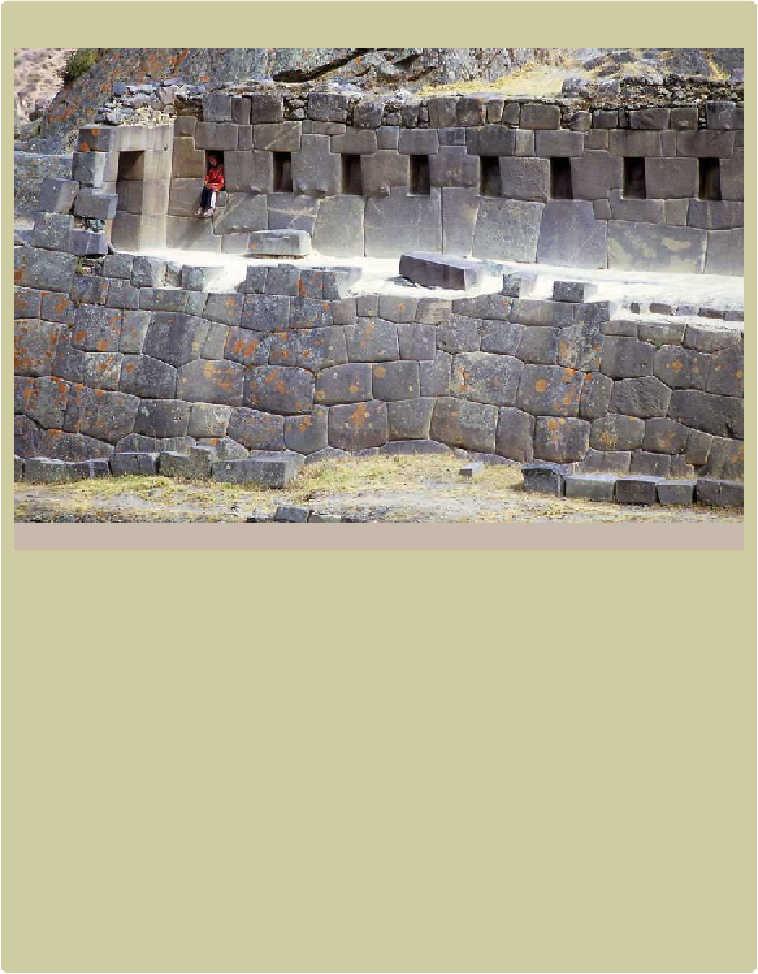Travel Reference
In-Depth Information
EMIL VON MALTITZ/GETTY IMAGES ©
Don't Miss
Ollantaytambo Ruins
The huge, steep terraces that guard Ollantaytambo's spectacular
Inca ruins
mark one of the few places where the
Spanish conquistadors lost a major battle. It was to this
fortress
that the rebellious Manco Inca retreated after his
defeat at Sacsaywamán. In 1536 Hernando Pizarro (Francisco Pizarro's younger half-brother) led a force of 70 cav-
alrymen here, supported by large numbers of indigenous and Spanish foot soldiers, in an attempt to capture Manco.
Pizarro's men were showered with arrows, spears and boulders from atop the steep terracing and were unable to
climb to the fortress. They were further hampered when Manco Inca, in a brilliant move, flooded the plain below the
fortress through previously prepared channels. The Spaniards' horses were bogged down in the water and Pizarro
ordered a hasty retreat, which almost became a rout when the conquistadors were followed down the valley by thou-
sands of Manco Inca's victorious soldiers. The Inca victory was short-lived, however. The Spanish forces soon re-
turned with reinforcements and Manco was forced to flee to the jungle stronghold at Vilcabamba.
Though Ollantaytambo was a highly effective fortress, it was also a temple. A finely worked
ceremonial center
is at the top of the terracing. In addition, you'll find some extremely well-engineered walls - which were under con-
struction at the time of the conquest and therefore never completed. The stone for these was quarried from the
mountainside 6km away, high above the opposite bank of the Río Urubamba. Transporting the huge stone blocks to

